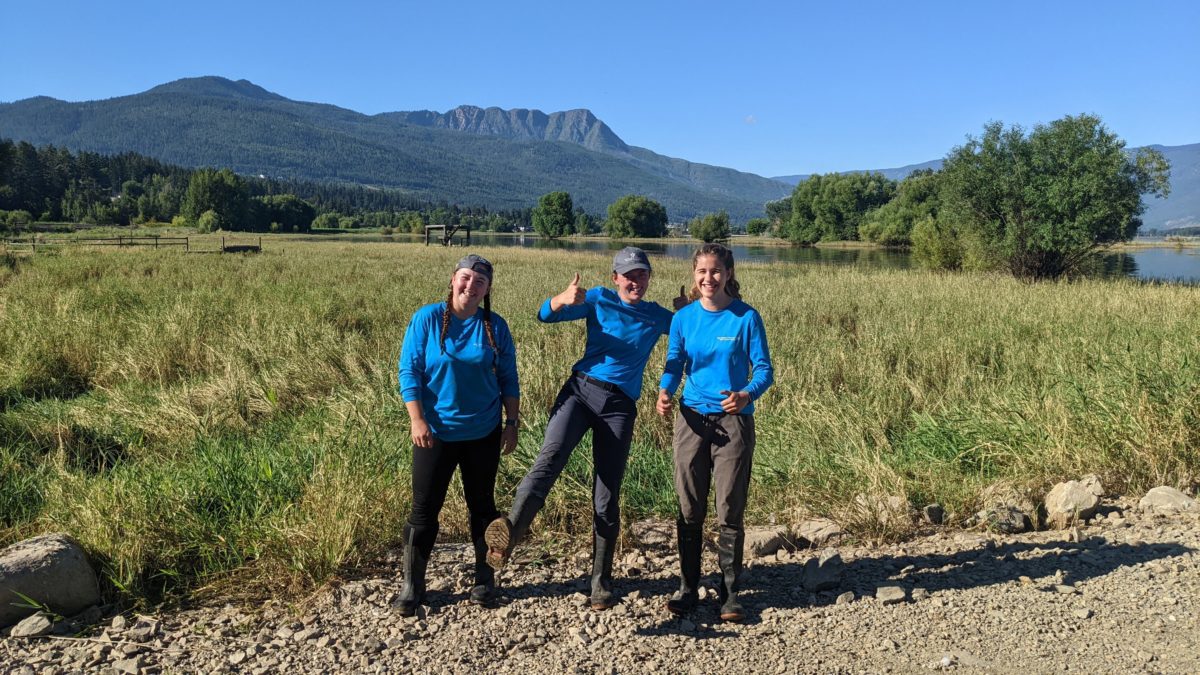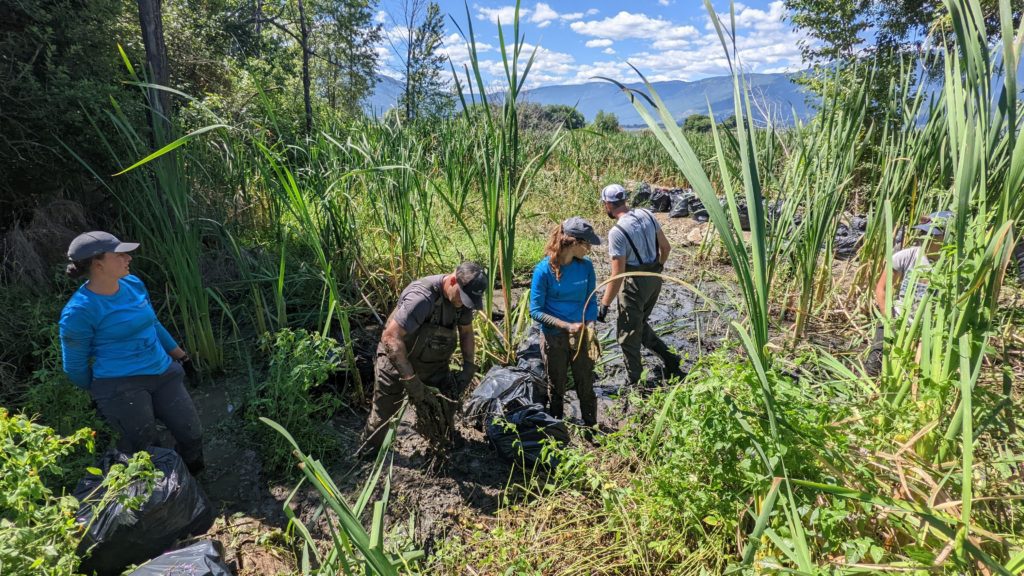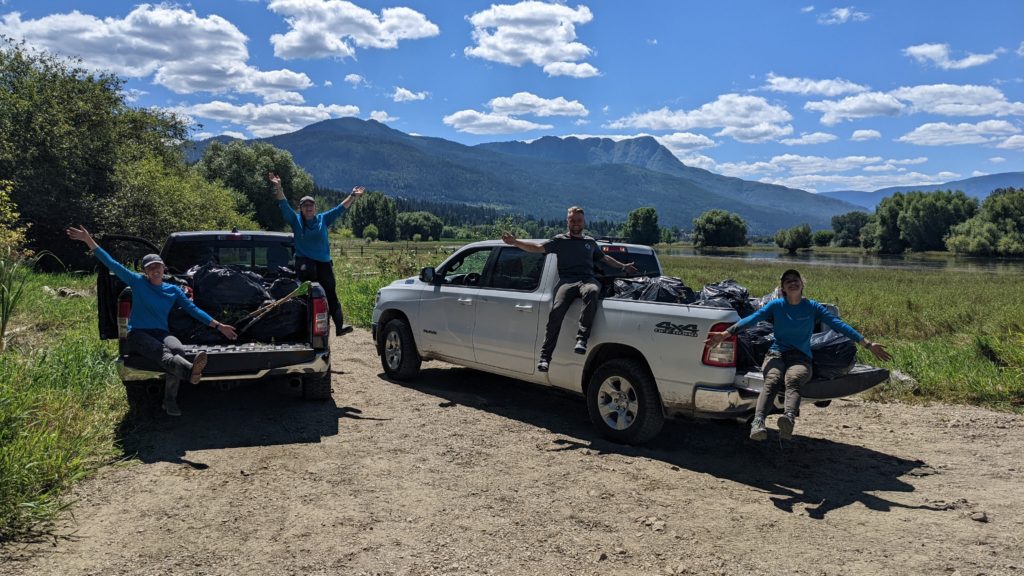
By Alix Casey, Okanagan Conservation Field Crew
Workday mornings usually start with an early wake up, breakfast, and maybe a coffee stop. On this July day, early wakeup happened in a sun-warmed tent in a quiet campground with many birds saying hello. We were also greeted by mosquitoes waiting to pounce on the first live body to emerge.
I find that there is much to be excited about when traveling for work, whether visiting a new town, or in my case, somewhere familiar. For most of the Crew, it was a new area. Everyone was determined to find the best coffee shop for pre-work refreshments. We also spent some post-work time cruising through downtown Salmon Arm stopping into every bookshop and interesting store we could find, like a true tourist.

Our property, Salmon Arm Bay Foreshore, contains a very busy and very accessible trail. Lining the trail were cottonwoods, bulrush, willows, cattails, and many grasses, sedges, and rushes. After a bit of sightseeing and investigating with Columbia Shuswap Invasive Species Society (CSISS), we prioritized focus. Along the sides of the trails was an aggressive and invasive, Bittersweet Nightshade (Solanum dulcamara), growing in the cattails and climbing for the sun.
As described, this species prefers moist areas and colonizes quickly when given space and light to expand. Because of its toxicity to humans, wildlife, and livestock, it’s a priority species that can be removed with manual or chemical treatments. We attacked big patches by pulling the live vines and old stocks. Difficult but satisfying, the Crew was able to remove over 1,000 lbs of the plant over 2 days. We then got to embrace our inner fairy, sprinkling last year’s cattail seeds through the air, providing local seeds to the treatment areas.

With such a large removal, the crew left happy and fulfilled. We said thanks and “see you next time” to CSISS, ready to travel home and to check on Nature Trust properties along the way, excited for the rest of our season.
